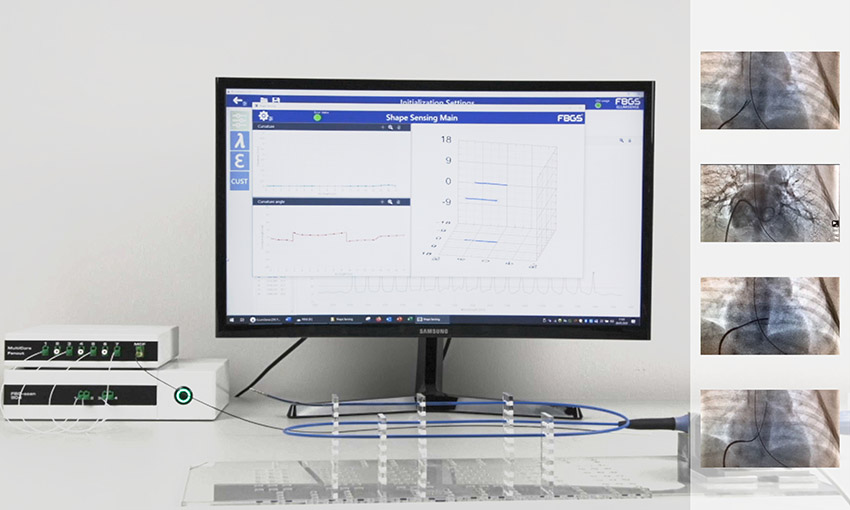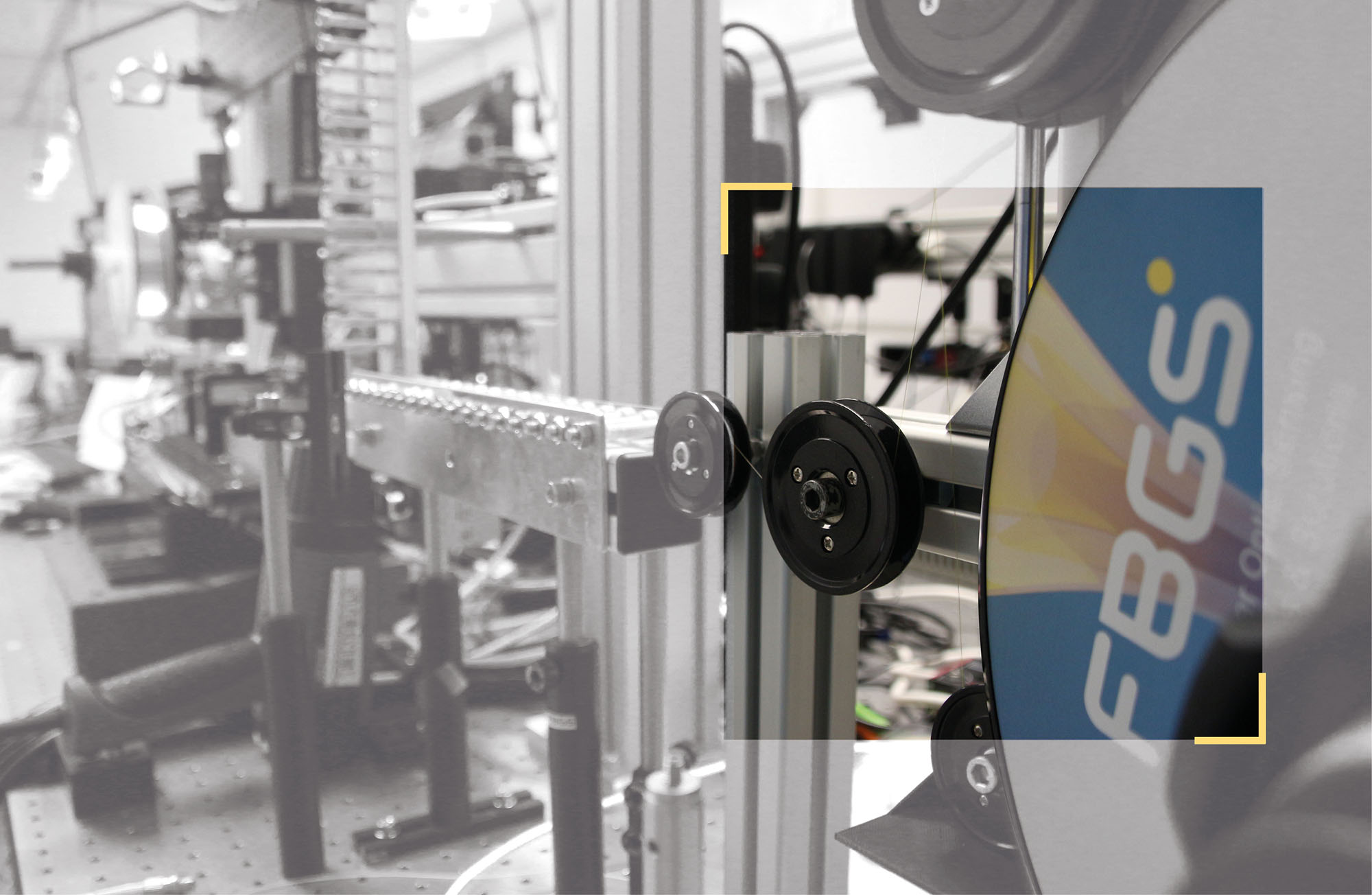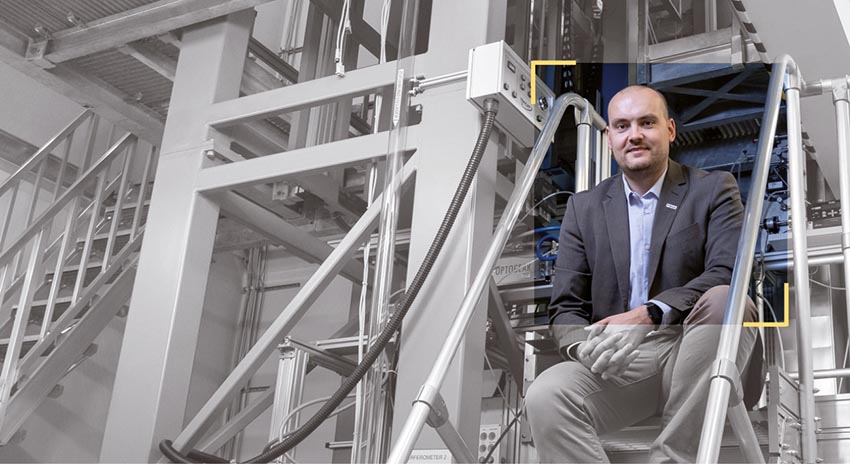FBGS are a Germany and Belgium based developer and manufacturer of tailored fiber optic sensing components and solutions combining both core competences in fiber optic sensors and interrogation technology. Their unique manufacturing technologies enable products suitable for standard and bespoke applications in temperature, shape, strain, force and pressure sensing. Key players in industries such as process industry, energy, civil engineering or medical rely on FBGS to enable advanced monitoring in harsh or demanding environments where no other sensing methods can be implemented.
Their strong application know-how has led FBGS to become an innovation driver, empowering their customers especially in medical applications and process monitoring.
Interview with Dr Eric Lindner, CEO of FBGS.
Easy Engineering: What are the main areas of activity of the company?
Eric Lindner: FBGS are a specialist of fiber optic sensing. The company possess core competences in three fields: the fiber, the interrogation technology and the application know-how for many industries. All are combined to offer customers tailored sensing solutions specialized for harsh and critical environments.
Concerning the fiber, FBGS use two patented in-house manufacturing processes. One process is called DTG® (Draw Tower Gratings): the production combines the drawing of the optical fiber with the writing of the grating. The other process is called FSG® (FemtoSecong Gratings): the technology exploits the through-coating FBG inscription process, which utilizes ultrafast laser pulses launched via special optics to the fiber core without damaging the fiber coating and complements the DTG® technology by adding new manufacturing capabilities due to special demands.
Regarding the interrogation technology, FBGS rely on extensive and long-term expertise in WDM (Wavelength Division Multiplexing) therefore engineering high-end devices, such as the FBG-Scan 90X product line, offering fast and precise fiber readout and processing. All devices are compatible with the in-house developed ILLumiSense software.
E.E: What’s the news for 2021 about new products?
E.L: 2021 is a very special year for FBGS.
The group celebrates 10-year anniversary (in the shape that they are now) and is moving to new workspaces and production in Belgium.
The first new product announced in 2021 is the new interrogation platform: FBG-Scan 915-EP. FBG-Scan 915-EP is FBGS’ flagship device for spectrometer-based FBG interrogation, combining 15 channels and the top performance of the FBG-Scan 90X product line.
Specially developed for industrial environments, it delivers the unmatched precision of 0.3 pm @ full measurement speed with a maximum number of up to 750 sensing points.
Although this is a great step in engineering future measurement devices, FBGS do not stop there and have already started further developments, counting one potential release at the end of 2021 / beginning of 2022.
E.E: What are the ranges of products?
E.L: Combination of fiber, sensor, interrogator and software to create customer-specific sensing systems measuring: shape, temperature, strain, force and pressure.
Each solution is customer-specific, taking into account the end application, its environment, its requirements and needs to achieve the best possible system.

E.E: At what stage is the market where you are currently active?
E.L: FBGS are present and active in the sensor market and more precisely on several niche markets or sub-markets of fiber optic sensing. Based on the solutions, these are: temperature sensing, strain sensing, force sensing and pressure sensing as well as the completely new market of shape sensing.
The overall fiber optic sensing market is in a steady growing phase. Most of the sub-markets are following the same steady growth. The only exception is the shape sensing sub-market, which does not yet exist as such and is being created.
E.E: What can you tell us about market trends?
E.L: Fiber optics is a disruptive technology in the field of sensing compared to „traditional” or „classical” sensing technologies relying on electric or electronic sensors. This alternative offers sensing possibilities that cannot be met with traditional sensing technologies. These possibilities are different for almost every end application. The trend in several fields and markets is a growing interest in the technology for replacement, to equip infrastructures or to measure new applications.
Fiber optics opens of new possibilities for monitoring which were not possible before especially in harsh industrial environment or new medical application where its potential can be experienced at its best.
The present market growth is linked to this increasing interest for the alternative technology, as new markets and applications discover fiber optic sensing. This is a good basis for a solid growth in the next years as more and more applications and markets will come to the technology.

E.E: What are the most innovative products marketed?
E.L: Fiber optic shape sensing is FBGS most innovative solution:
„Fiber optic shape sensing has an outstanding capability to sense curvature and shape in 2D and 3D. The technology will enable cutting-edge applications in the fields of robotic and standard minimally invasive surgery – such as real-time position tracking, instrument and catheter navigation, force and bending detection as well as deformation monitoring.”
Fiber optic shape sensing; high accuracy when it matters most: in critical situations.
Combining issues such as reduced exposure to radiations while still being able to “see” through the body may at first seem quite challenging. This was the reason why fiber optic shape sensing was developed. It presents the advantage of being able to track itself thus recreating the shape inside the body.
The biomedical sector is currently the main integrator of fiber optic shape sensing systems. It has already found many disciplines mostly in catheter navigation and position tracking. For cardiovascular applications, current catheter navigation is externally supported by X-Ray or MRT or by placing an inductor on the patient’s chest. These procedures may pose health risks through radiation for medical staff and patients. With fiber optic shape sensing, a real-time 3D-image of the catheter position is displayed on a screen. A multi-core fiber, as thin as a human hair, equipped with Draw Tower Gratings (DTG®s), detects bending and curvature along the path in real-time to a precision of millimeters.
Especially in the fields of heart surgery and drug delivery, shape sensing is making a difference in increasing safety for both physician teams and patients.

E.E: What estimations do you have for 2021?
E.L: FBGS are again in a record year – for the 3rd time in a row – in terms of growth.
In 2021 the company achieved:
- closing of key contracts with major players in the civil engineering, industrial and medical fields, including crucial R&D development tasks as well as considerable production setup, running over several years
- significantly increased production volumes for DTG, FSG and measurement devices
- staff increase by 35% in 2021 with new employees for R&D, production, process development and quality
The estimations for 2021, being now at the middle of the year, look even better than at the beginning of it. Until now all the objectives have been fulfilled and FBGS are confident that this will continue until December. The company in a great growth path, which will continue in 2022 and beyond. FBGS look toward a bright future based on steady and healthy growth.


